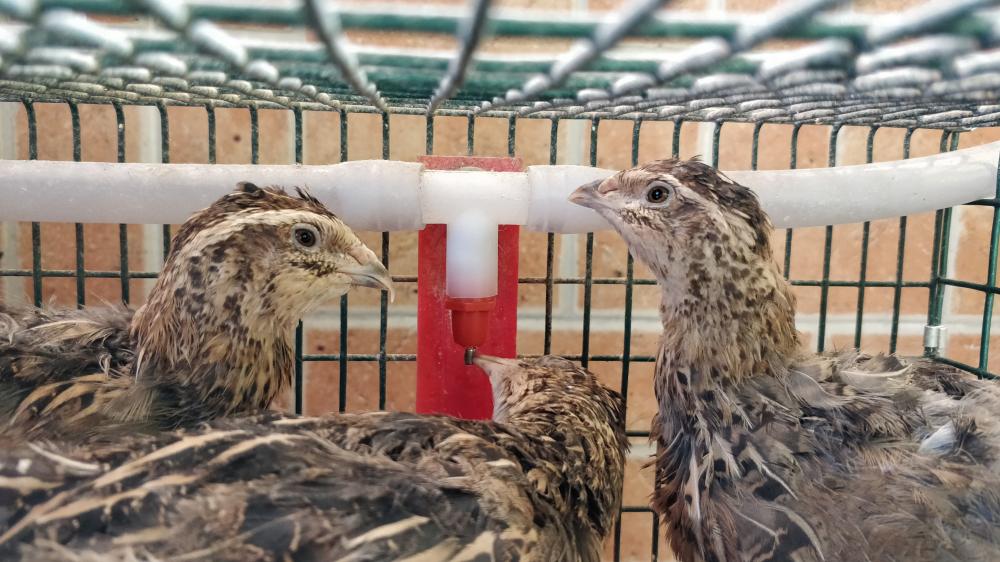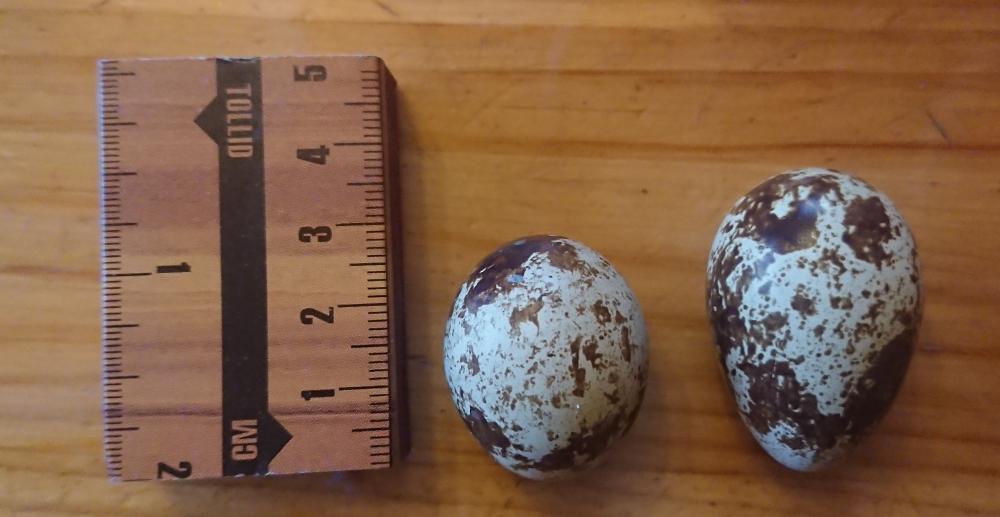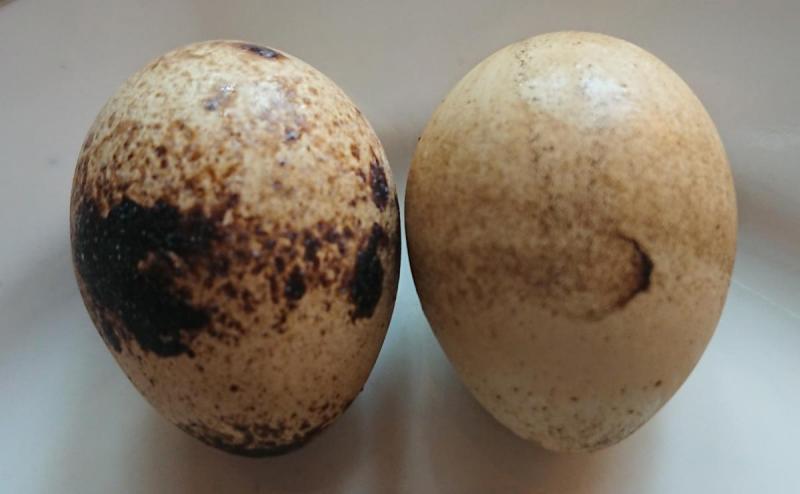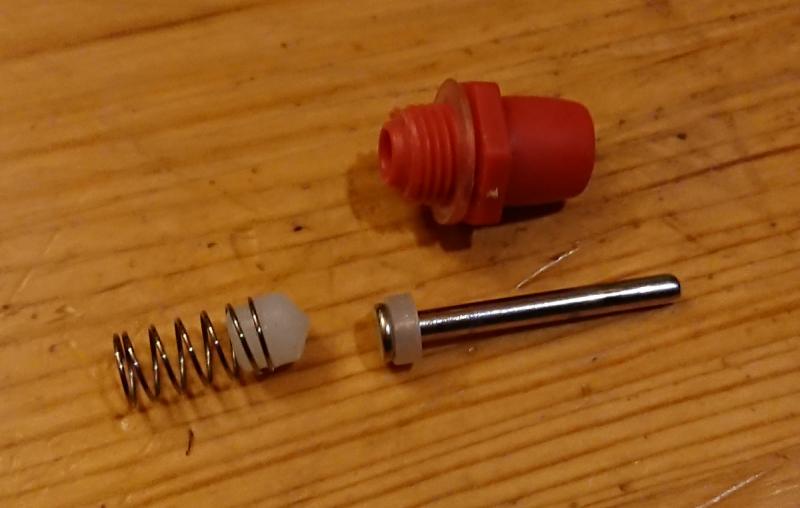Praise to the Estonian Quail -- Through the Prism of Water Supply
This January, we added quail (Coturnix), the Estonian variety, to our family of birds and animals. They live in a special cage in a quiet corner of our living room. With stable, automated lighting, ample food and automated drinkers – everything they need for a safe, predictable and peaceful environment, to ensure they lay eggs as well as possible.
Our quail learned to use the automated drinker in a couple of days. To get water from it, one has to push the nipple a bit.

The available literature states that Estonian quail will lay an egg per day on average, at least during the first year of their life. We bought 10 female birds that were born around New Year, and in February they all started laying eggs. During spring, we got 9 to 10 eggs each day.
A Hot Summer and a Decline in Laying
This year’s summer was very hot, beginning from May. Sometime in June or July we noticed that the quail have started to lay fewer eggs, the eggs are smaller and some have lost their pattern. The photos below depict a comparison of egg sizes (a smaller one to the left, and a regular sized egg to the right). The second photo depicts two eggs by the same bird, with a pattern and without. As we have read, losing the egg’s pattern is a sign of stress in quail.


But Have You Ever Watered Your Quail?
Our first thought in relation to heat was that perhaps the amount of water that the birds got from the automated drinkers, wasn’t enough. Somehow I got the idea of taking a sprinkler bottle and directing the stream of water towards the bases of their drinkers. It turned out though, that our quail really enjoy being watered and so they took baths under the water stream. So I watered them about twice daily during the whole summer, in a manner you can see in this video.
The Hot Summer Was Over But the Quail Were Still Thirsty
We saw some improvement in the egg laying rate when watering the quail daily, but it still remained at about 7 to 8 eggs daily. After the heat was over, we almost stopped sprinkling the quail because, well, they should be independent after all.
In September, the situation got worse and suddenly we were only getting a couple of eggs each day. Because we’d had an experience with the effect of water in the summer, we decided to check how the automated drinkers were still working.
Taken apart, the pieces of the nipple mechanism look like this:

So the pieces of the mechanism had some limescale on the surfaces, but cleaning these up didn’t solve the issue. It seems more likely that the reason for the failure is that the spring has got tired or loose somehow – but only a bit so we didn’t notice the difference. After having replaced the nipple mechanisms with new ones (we had some extra drinkers at home), the drinkers started working again. When you push the nipple a bit, water flows and the quail can drink.
In general, it seems that dry bases of the drinkers are a good sign of insufficient water supply. If quail keep drinking continuously, the base gets enough of water so it will not dry up.
Back to Laying in a Couple of Days!
After we’d fixed the drinkers, the rate of laying eggs quickly rose from 2 to 3 eggs a day to 10! At the time of writing this post, we have got 10 eggs the last 4 days and we’re really happy. The average mass of the eggs has risen from 12.5 grams in the summer to 14.5 grams – from the low end to the upper end of the average mass range of the eggs of Estonian quail.
In contrast to ducks who go into a molt as a reaction to stress, and who stop laying for several months, it turned out that egg laying in quail can be controlled really easily! Praise to the birds and to the breeders!
P.S. We bought our quail from the Väljaotsa quail farm in Raplamaa, Estonia. Information about the Estonian quail can be found at http://www.evutt.ee/ but it’s in Estonian only.